#Sydenham section
Text

#Bruce Trail#Boyd Crevice#Sydenham section#Niagara Escarpment#Bruce County#Ontario#Canada#hiking#hiking trail#forest#trees#wilderness#rocks#cliffs#crevasse#crevice#caves#outdoors#landscape#limestone#photography#digital photography#DSLR#Canon 6D#photographers on Tumblr
31 notes
·
View notes
Text
MAHCET Course 2024: Everything You Need to Know
MAHCET, or Maharashtra Common Entrance Test, is a highly reputed entrance examination for pursuing MBA and MMS programs in the state of Maharashtra. As we gear up for the 2024 course, it's essential to delve deep into what the exam entails, its significance, the key changes, and the preparation strategies.
An Overview of MAHCET
The MAHCET exam is a gateway for admission into over 300+ B-schools in Maharashtra. Conducted by the Directorate of Technical Education (DTE) Maharashtra, this state-level exam allows candidates to apply to institutions offering MBA, MMS, and PGDM programs within Maharashtra.
What’s New in MAHCET Course 2024?
While the fundamental structure of MAHCET remains unchanged, there are always subtle shifts in emphasis, question types, or procedures. It's always wise to stay updated with the official DTE website for the most recent notifications.
Exam Pattern
The MAHCET 2024 exam pattern is expected to remain consistent with the previous years. Typically, the test includes:
Total Questions: 200
Duration: 150 minutes (2.5 hours)
Sections: Logical/Mental Ability, Abstract Reasoning, Quantitative Aptitude, and Verbal Ability/Reading Comprehension.
Marking Scheme: No negative marking.
Importance of MAHCET
For aspirants looking to pursue their MBA in Maharashtra, clearing the MAHCET is crucial. Not only does it offer a chance to study in some of the top B-schools in Maharashtra, but the variety of colleges affiliated with MAHCET means that students can find a program perfectly tailored to their career aspirations.
Preparation Tips for MAHCET 2024
Understand the Syllabus: Begin by getting a comprehensive understanding of the MAHCET syllabus. It's essential to familiarize yourself with topics under each section.
Mock Tests are Crucial: Regular practice with mock tests can give candidates a clear idea about the examination pattern, type of questions, and can also help in time management.
Focus on Strengths but Don’t Neglect Weaknesses: While it's essential to strengthen your strong areas, don’t completely neglect the areas where you're weak. A balanced preparation strategy can make a significant difference.
Stay Updated: Regularly reading newspapers and magazines will not only help in the verbal ability section but also keep you updated with the latest happenings, which might be useful for group discussions and personal interviews later on.
Group Studies: They can be beneficial, especially when discussing logical reasoning problems or debating current affairs topics.
Top Colleges Through MAHCET
Several esteemed institutions accept MAHCET scores. Some of the top ones include:
Jamnalal Bajaj Institute of Management Studies (JBIMS), Mumbai
Sydenham Institute of Management Studies, Research and Entrepreneurship Education (SIMSREE), Mumbai
K. J. Somaiya Institute of Management Studies and Research, Mumbai
Prin. L. N. Welingkar Institute of Management Development & Research, Mumbai
Pune University Department of Management Studies (PUMBA), Pune
Important Dates for MAHCET 2024
While the exact dates will be available on the official DTE website, aspirants should look out for:
Registration Period: Typically begins in the first week of January and extends till mid-February.
Admit Card Release: Generally available two weeks before the exam date.
Exam Date: Usually scheduled for the second week of March.
Result Declaration: Expected in the last week of March.
Eligibility Criteria
For MAHCET 2024, the eligibility criteria are expected to remain consistent with the previous years:
A candidate should possess a bachelor's degree in any discipline with a minimum of 50% marks (45% for backward class categories from Maharashtra state only).
Final year students can also apply, given they meet the eligibility criteria upon result declaration.
Post MAHCET: The Admission Process
After the MAHCET results are announced, the Centralized Admission Process (CAP) rounds begin. It's a counseling process where students are allocated colleges based on their MAHCET scores, preferences, and seat availability.
In Conclusion
The MAHCET is more than just an entrance test; it's a path to some of the finest B-schools in Maharashtra. As we approach the MAHCET Course 2024, dedicated preparation, awareness about the process, and a clear understanding of the exam's nuances are vital. Best of luck to all the aspirants!
1 note
·
View note
Text
ONCE KNOWN AS THE ROAD OF TEN HOUSES
Putland Road was laid out as a Famine Relief Scheme. It was known as "The Road of Ten Houses" because that was the number of houses at Putland Villas.
A SECTION OF PUTLAND ROAD IN BRAY COUNTY WICKLOW
Putland Road was laid out as a Famine Relief Scheme. It was known as “The Road of Ten Houses” because that was the number of houses at Putland Villas. A few years later the road took on the name of the Putland family, the local landlords who lived in Bray Head House. I think that the ten houses are at Sydenham Villas.
Charles Putland (1785–1859)…

View On WordPress
#bray head#Charles Putland#Constance Putland#Famine Relief Scheme#Fotonique#FX30#George Putland#Infomatique#July 2023#Putland Road#Sony#The Road Of Ten Houses#William Murphy
0 notes
Text
King Pedro V of Portugal

Approaching the life and history of King Pedro V in its essence, is justified given the importance that this monarch had in such a short time of life and reign, for Portugal, as well as the important role he played in development, whether technological, or social at that time in the country in various sectors. Pedro de Alcântara Maria Fernando Miguel Rafael Gonzaga Xavier João António Leopoldo Victor Francisco de Assis Júlio Amélio de Bragança, Bourbon and Saxe Coburgo Gotha was born in Lisbon at Paço Real das Necessidades

on September 16th, 1837 at 11.30 pm, where he also died on November 11th 1861, at 7 pm being baptized in the chapel of the same Paço on October 1st the following by the Cardinal Patriarch of Lisbon D. Fr. Patrício da Silva (1756 - 1840),

chaplain of Queen D. Maria II. Known as, The Hopeful, The Well-Beloved or The Very Beloved, firstborn son of Queen D. Maria II (1819 - 1853) of sovereign Portugal, and of her husband, the king consort D. Fernando II (1816 - 1885).
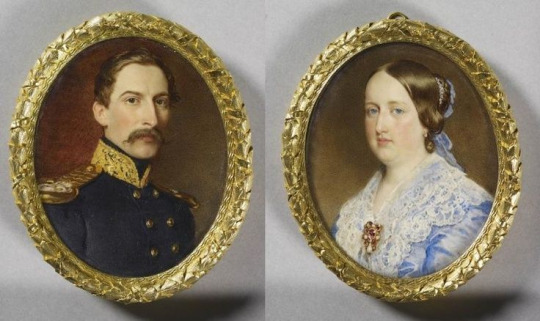
On the day of the birth of Infante D. Pedro, there were parties all over Lisbon and in the gardens on the outskirts around the city. All of this because there was fear of the danger of no succession on the part of Queen D. Maria II due to her difficult pregnancy. Pedro was sworn and recognized as a royal prince and heir to the Portuguese crown by the Cortes Gerais on January 26th, 1838, aged just over four months. Considered a gifted child, he was educated exquisitely, as were his brothers, D. Luiz I of Portugal (1838 - 1889), D. João de Bragança, Duke of Beja (1842 - 1861), D. Maria Ana de Bragança, princess of Saxony (1843 - 1884), D. Antónia de Bragança (1845 -1913), D. Fernando Maria Luiz de Bragança (1846 - 1861) and D. Augusto de Bragança, Duke of Coimbra (1847-1889), by the best teachers from Lisbon, and mainly by his mother, who always had a very good reputation as an excellent educator. From an early age he revealed the brilliant qualities that characterized him, his remarkable intelligence, his tendency to persevere in study, the noblest and highest qualities of spirit and heart. He had a remarkable moral and intellectual preparation.

He studied natural sciences, philosophy, had a good command of Greek and Latin and even studied English.

Before completing two years of age, he already mastered the German and French languages, at the age of twelve he spoke Latin and Greek, studied great works of philosophy and wrote articles for newspapers. His spirit was influenced by the coexistence he had with Alexandre Herculano (1810 - 1877),

who was his educator. He also received numerous advice on governance and sense of state by Mário Jorge de Castro Botelho, with whom he exchanged correspondence, among other figures of the time, during the period of his reign.
The young monarch's apprenticeship was also made with the various trips he will undertake in Portugal and abroad, visiting several European courts, observing schools and teaching methods, asylums, hospitals, factories and museums. When his mother, Queen D. Maria II, died on November 15th, 1853, Pedro was sixteen years old, whom he succeeded on the throne. D. Pedro V
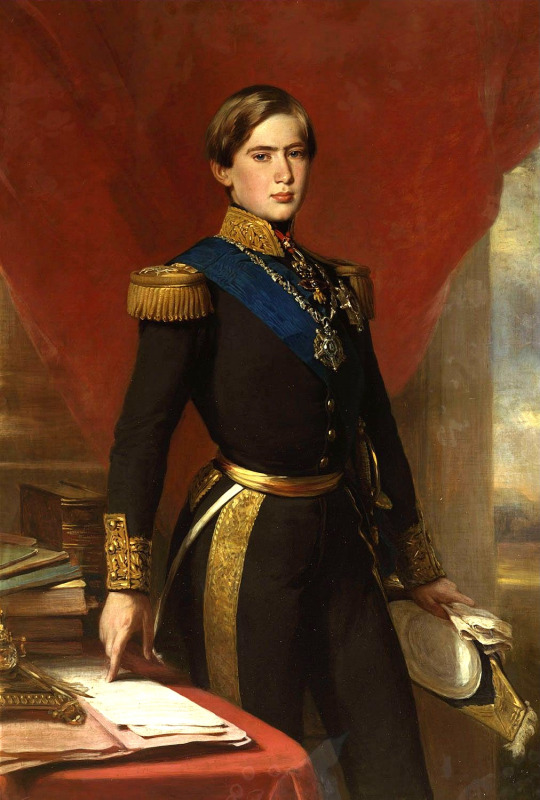
is the 30th king of Portugal

and although very young at the time of his accession to the Portuguese throne, he was considered by many to be an exemplary monarch, who reconciled the people with the royal house, after his mother's reign was fruit of a civil war. When D. Pedro V began his reign, he still governed the ministry of Saldanha, out of the Regeneration of 1851. The Duke of Saldanha

that D. Pedro deplored and despised, considered a condottieri, already somewhat outdated for the capitalist country (capitalist at the time). it costs, it should be mentioned, of foreign capital, mainly French and English) is no longer in conspiracies, either stability. António Maria de Fontes Pereira de Melo (1819 - 1887)

stands out in this ministry, holder of the Public Works portfolio, famous for the impulse he gave to the railways in Portugal, among other works in Portugal. D. Fernando II, his father, played a fundamental role in the beginning of his reign, having exercised the government of the nation as regent of the kingdom, guiding the young king with regard to the great public works carried out. D. Pedro V is often described as a monarch with very present social values, partly due to his education, which included work with the communities and a vast knowledge of the European continent. To solemnly celebrate the beginning of the reign of D. Pedro V in 1853, the Asylum of D. Pedro V

was founded, in Campo Grande in Lisbon, being this monarch from the outset his protector. Its magnificent building still exists,
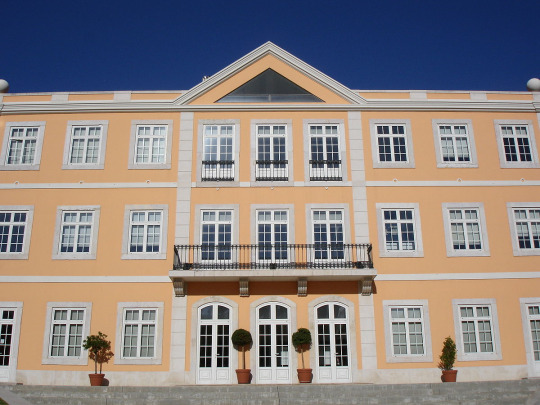
and would be inaugurated on October 18th, 1857, with its Statutes approved on November 2nd, 1860. In the beginning it only received children up to the age of seven, with the death of this monarch, the statutes were refurbished in 1867, becoming the Asylum of Disadvantaged Childhood of Campo Grande, and asylum seekers can remain until 18 years old. The Lisbon trade contributed to the maintenance of this Asylum. At the age of eighteen, the majority of the kings of Portugal, D. Pedro V was even smaller, and that same day the Council of State was called, which decided to entrust the regency of the kingdom, during the young monarch's minority, to his father. , the king consort D. Fernando II, since there is no provision regarding this issue in the Constitutional Charter, a decision which was later confirmed by the Cortes Gerais, and which he took an oath at the session of December 19th, 1853. It was during his reign Regeneration began and Portugal entered modernity, so to speak. D. Pedro V and his brother D. Luiz I of Portugal, who later succeeded him to the throne, undertook an educational and recreational trip through Europe. In May 28h 1854 they left the Lisbon bar on board the steam ship Mindelo,

going directly to London, then passing to Belgium, Holland, Prussia, Austria, France and Saxe-Coburg-Gotha, returning to London, where they returned to Lisbon. In all these courts, the royal rulers provided the greatest proof of consideration and sympathy. As a proof of this, during that trip to London, on June 10th, 1854, D. Pedro V and his brother D. Luiz I, accompanied, on the right in the place of honor, Queen Victoria of the United Kingdom in the sumptuous reopening of the Palace of Cristal, reinstalled on Sydenham Hill.


Therefore, the Portuguese king and prince were received in the privacy of the British Royal Family
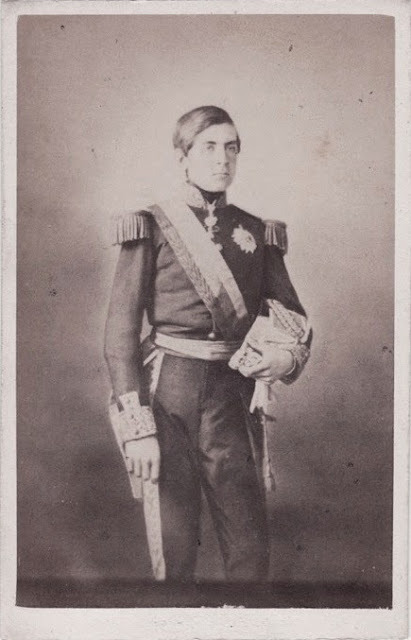
and this friendship would last, even beyond their stay in the Lands of Her Majesty,

as they would continue to correspond with assiduity becoming Queen Victoria and the prince Albert,

advisers and even confidants of the young Portuguese monarch.
In the following year, 1855, they undertook a new journey, visiting again some of the lands already mentioned, as well as Italy, Switzerland, etc. All visiting places served them as learning from other realities, especially the most innovative and those that were urgent to implement in Portugal.
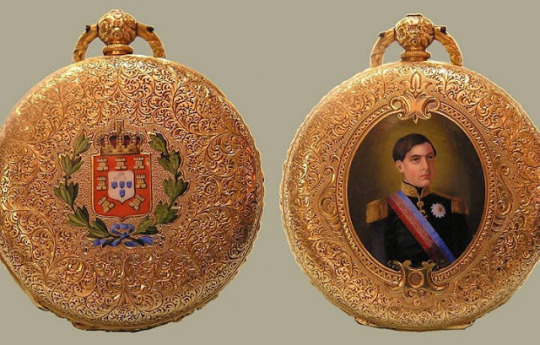
On the return of that trip, completing D. Pedro V, eighteen years old on September 16th, 1855, that day his majority was declared, and he swore an oath in a solemn session of the General Courts before the Peers of the Kingdom and the Deputies of the Nation: Pela Graça of God, King of Portugal and the Algarves, d'Aquém and d'Além-Mar in Africa, Lord of Guinea and Conquest, Navigation and Commerce of Ethiopia, Arabia, Persia and India, etc. On that day he receives from his father D. Fernando II, king regent, the duties of the throne of Portugal that had belonged to his mother the queen D. Maria II. Large and enthusiastic parties were held in Lisbon to solemnize the new king who was going to assume the heavy and thorny office of the kingdom's governance. This new king was a young man of 18 years, serious and sensible, illustrated and serious as a man twice his chronological age. Always concerned with education and training, on December 9th, 1855, the Royal School of Mafra opens in the Mafra Palace itself, this institution being financed by the monarch himself.


That same year, D. Pedro V chaired the inauguration of the first electric telegraph in Portugal

and, on the following year, on October 28th, 1856, he inaugurated the first section of railroad in Portugal between Lisbon and Carregado, following a process initiated by his mother, Queen D. Maria II in 1853. Regarding the railway D. Pedro V followed with interest and enthusiasm the works and line tests that took place days before of the inauguration.

Having created the first railway company in Portugal, the Companhia Peninsular dos Caminhos de Ferro de Portugal, in charge of building the line from East Lisbon to Spain. On that day after the blessing of the locomotives, sixteen carriages left in a festive atmosphere for Carregado, towed by two locomotives named "Santarém" and "Coimbra". The young king D. Pedro V and the guests of the company's management followed in the main coach, surrounded by his technicians, all talking about this novelty and innovation for Portugal.

Although this inaugural trip was troubled, it would be the beginning of a great and important development for the country. As a curiosity, D. Pedro V and his brothers, namely D. Luiz I, had early coexistence with the new technologies of the time, which it would come to some extent to influence later on the railway. An example of this was the miniature toy locomotive, real steam, which the King of France Louis Philippe I (1773 - 1850), asked mechanical engineer Eugène Philippe, to build the copy of a toy steam locomotive (called steam live or live steam) ), his belonging, called La Lilliputienne, to offer the Portuguese royal family.

This was also how cultural training began through the contacts that the two monarchs had as children and young people, with that toy from the Palácio das Necessidades. It was the first steam locomotive to exist in Portugal. Around 1880, this toy was made available for the Passeio Público de Lisboa. The locomotive, its tendency and the network of rails became an installation of "steam live" (live steam) at the service of the children of the Lisbon bourgeoisie and source of animation in that public place. This locomotive is currently preserved at the National Railway Museum (MNF) in Entroncamento. It is also during his reign that the first regular ship voyages between Portugal and Angola begin. Popular education has always been his main concern. He founded the Escola Real das Necessidades on September 16th, 1856, in a building near Paço Real,

and in Paço de Mafra he had installed a school in the previous year. This king had the pleasure of distributing books in prizes to children, his secretary Joaquim Pinheiro Chagas (1809 - 1859), father of the late statesman and distinguished writer Manuel Joaquim Pinheiro Chagas (1842 - 1895), was responsible for translating and adapting Portuguese schools to Dr. Brewer's Clef de la Science. This translation was interrupted with the death of the translator, which happened on December 3rd, 1859. Great misfortunes began to mark his reign. In 1856 a morbus cholera epidemic

developed in Lisbon, and in many other parts of the country, making considerable numbers of victims, in the following year, 1857, another scourge, which became even more devastating, yellow fever, came to plague the capital. It was two years of sad memory, which mourned thousands of families in Portugal, many of them being completely extinguished, leaving many children in orphanage. The city of Lisbon, especially in 1857, had a very sad aspect, especially in the lower part of the city, numerous establishments were closed; some, because their owners died, others because they left Lisbon, fleeing the terrible contagion of successive epidemics.

The general terror was indescribable; by order of the government, newspapers were prohibited from giving long news about the deaths, as well as the number and names of the victims, who even occupied many columns daily. Burials began to take place at night, in a simple and discreet manner, with funeral pomp not permitted, only a dry one leading the dead man and the priest to accompany him. The hospitals were not enough to house the huge number of patients, and some provisionals were organized in certain parts of the city. Numerous penance processions roamed the capital's streets, and prayers were chanted in churches every day. Theaters and other public entertainment closed. The consternation was general, the streets were deserted, the terror was plastered on all faces.

Many inhabitants of Lisbon left the city, going to live in the surroundings like Campolide and Benfica, as well as to other distant lands. Senior officials and other public servants, capitalists, businessmen and the patriarch himself, leave the capital. In the midst of this dreadful and distressing situation stood out the figure of the young monarch D. Pedro V who, despite the advice of those around him, did not want to leave Lisbon, and which other apostle of good and resignation, went to the hospitals, sitting down near the sickbed, to whom he addressed words of hope and comfort.

When the helpers who accompanied him on these pious visits asked him not to be so exposed to the terrible contagion, he replied dryly that if they were afraid they would leave him, that he could be alone. This act of selflessness and charity made the greatest impression on everyone and even the admiration of foreigners. A boy who was only 20 years old, setting such a great example of love for those who suffered, trying to soften their suffering, at least cheering them up with his presence.
As ruler, King D. Pedro V was a moderate-minded liberal, having distinguished himself for his superior awareness of the country's problems. He studied the proposed government deliberations in detail. He gained enormous popularity, for the great public works carried out and for being an indefatigable and meticulous sovereign monarch who dedicated himself diligently to the government of the country, studying in detail the proposed government deliberations and their impacts, so that no one could accuse him of signing something of who had no knowledge. This type of stance towards the country's governance revealed that the monarch refused to be a mere "stamp king".

D. Pedro V ruled, in fact, in an individualized way, which earned him great popularity. An example of the attention he paid to the opinions and complaints of his subjects was the unprecedented resolution, having the famous green box, whose key he kept, be placed at the door of the Ajuda Palace,

so that his people could speak to him frankly, depositing their your expectations and complaints! It should be noted that there are differences as to where this green box was located, whether in the Ajuda palace or the Necessidades palace, however this measure taken by D. Pedro V caused some challenges in parliament.
King Pedro V became very popular, the people adored him, and called him the "holy king". Luck protected him, because by exposing himself so courageously to the danger of dark contagion, he had no sign of illness in those months of August, September, October and November 1857, when the effects of the epidemic were most pronounced. Little by little, the cases, which until then were numerous every day, became rarer, and when the end of December came, the yellow fever was completely extinguished, leaving the cries, the lamentations of the people who had lost loved ones and orphaned children, who they saw themselves left to the deepest sadness and longing. On the initiative of King D. Pedro V, the Asylo da Ajuda was created in 1857. It was intended to collect orphans of both sexes, children of the victims of cholera and yellow fever, staying in a building on the Calçada da Tapada in Ajuda in Lisbon. The age of admission was between 7 and 18 years old, and the orphans received, in addition to primary education, differentiated training according to sex. The girls were prepared for future servants to serve, and the boys learned a mechanical job.
In the year 1858, it brought to Portugal more peaceful days and more happiness. To alleviate the anxieties of the previous two years, it was the marriage of the young monarch, who had become the people's idol. This news was received with the greatest enthusiasm, the wife chosen being the princess of Hohenzollern-Sigmaringen, D. Estefânia Josefina Frederica Guilhermina Antónia (1837 - 1859),

second daughter of the sovereign prince of Hohenzollern-Sigmaringen, Carlos António Joaquim, and his wife D. Josefina Frederica. Previously, there were some proposals for possible brides for D. Pedro. There was talk, even without the existence of any document that has attested any matrimonial interest, of a possible marriage to the eldest daughter of Queen Victoria of the United Kingdom, Princess Vicky, however the young D. Pedro never ignored that the future bride could not be a princess from a Protestant family, seeing in addition to Vicky always a kind of older brother, whose company allowed for more cheerful conversation whenever he spent seasons in London on his travels. Another hypothetical case was that of marriage to the Belgian princess Carlota, discussed between her father and Queen Victoria. But Estefânia de Hohenzollern-Sigmaringen would be the one chosen for D. Pedro by indication of the Prince Consort Albert de Inglaterra. D. Estefânia brought together all the characteristics that were combined with those of D. Pedro and vice versa. The marriage was made by proxy on April 29th, 1858, in the Church of Santa Hedwig in Berlin. The Count of Lavradio was responsible for the marriage contract. On May 4th, 1858, D. Estefânia went to Bruxellas, and on the 5th she left for Ostend, where the steamboat Mindelo she was supposed to embark on, which was accompanied by the steam corvette Bartolomeu Dias and two yachts English. The squadron, as soon as the queen was on board, lifted iron, and went to Dover, where she arrived on the 6th, with Queen D. Estefânia remaining in London for four days with Queen Victoria. On May 11th, she embarked in Plymouth on the steam corvette Bartolomeu Dias, and escorted by a ship and three English frigates, she went to Lisbon, where she arrived on May 17th. At the break of dawn on May 17th, 1858, D. Estefânia, was greeted on arrival in Lisbon by volleys from the castle of S. Jorge and other forts, as well as from national and foreign warships that were anchored in the Tagus.
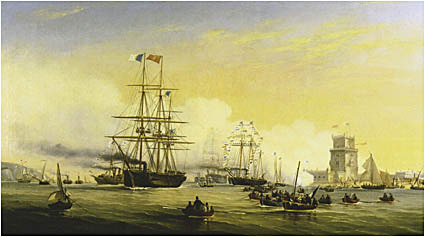
The cheers and acclaim, which the people released during the transit of Terreiro do Paço, where the young queen disembarked, reached delirium according to the reports of the time. The Terreiro do Paço was all decked out, exhibiting a pavilion across the width of the Cais das Colunas for its reception.

Five days of court gala and public holidays were decreed in the state offices. Two pavilions were set up in Terreiro do Paço,

whose mouths were elegant arches, as well as in Pelourinho, Cais do Sodré, and elsewhere in the city of Lisbon. In Rossio, where today is the memory of D. Pedro IV, in which there was only one pedestal at the time, a column was improvised, on which the statue of Hymeneu (Greek god of marriage) was seen.

The wedding ceremony itself took place in Lisbon, the day after her arrival, on May 18th, 1858, in the church of São Domingos,
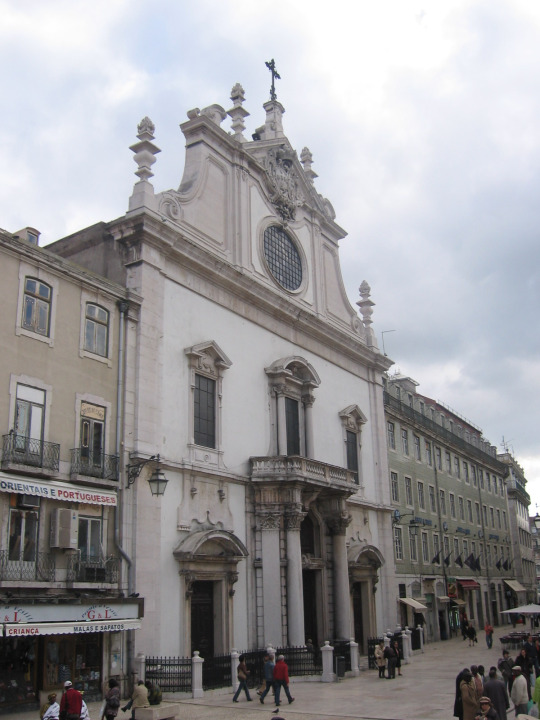
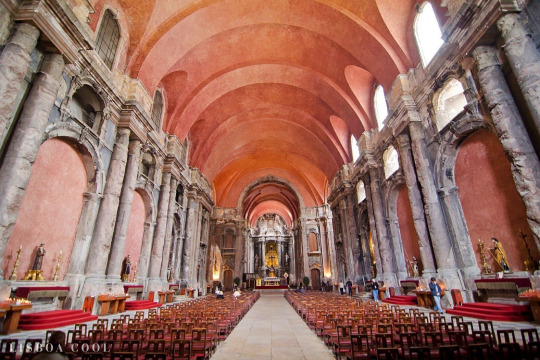
celebrated by the cardinal Patriarch of Lisbon D. Guilherme I (1793 - 1857). A beautiful spring day, which also seemed to come to greet the royal fiancés, joining the enthusiasm that was noticed everywhere, the joy and satisfaction that reflected in all faces.
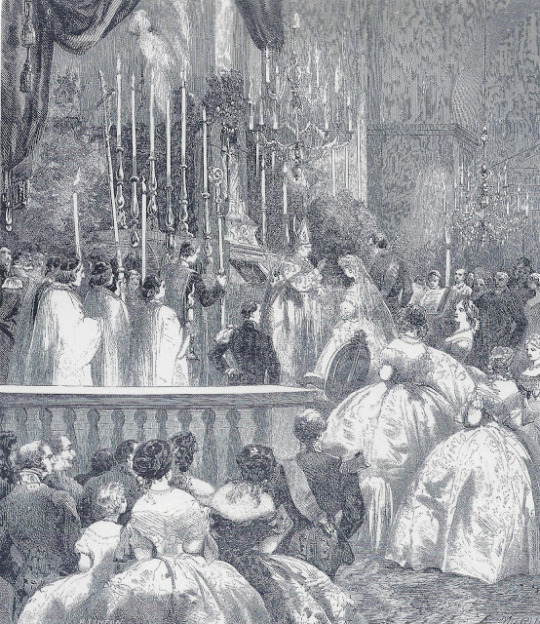
When D. Estefânia left the church of São Domingos, by the hand of her husband D. Pedro V, king of Portugal, the voices of the Portuguese dictated his destiny: “the queen is going dead! Go in chapel!” Three drops of blood had stained her spotless white dress. The young German princess did not have the strength to bear the weight of the magnificent diadem that D. Pedro had offered her as proof of his love. In the following days, splendid illuminations, parades, gala recitals in the theater of D. Maria II and diplomatic dinners were shown. Queen D. Estefânia soon also gained the greatest sympathies, her character, which is rarely found in these monarchical unions, was in perfect harmony with her husband's character.

The royal spouses loved each other extremely. They spent the honeymoon in Sintra during the summer of that year 1858, and often found themselves strolling alone arm in arm on the loneliest paths in the mountains, which were often repeated in Lisbon, through the Alcântara area ( at the time around Lisbon), and which inspired the people with the deepest sympathy, because they set an infrequent example of love in marriage and love on the throne, and the example of the highest domestic virtues with the purity of their living, with the affection that united them, which manifested itself at every moment.
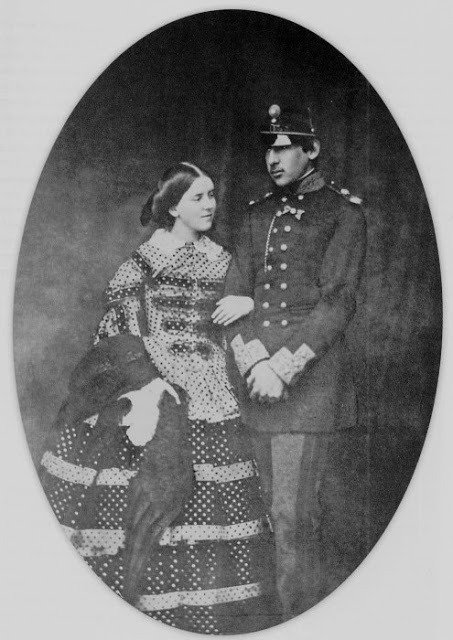
D. Pedro V, to impress his consort, spared no expense in the decoration of D. Estefânia's rooms, in the Palácio das Necessidades.
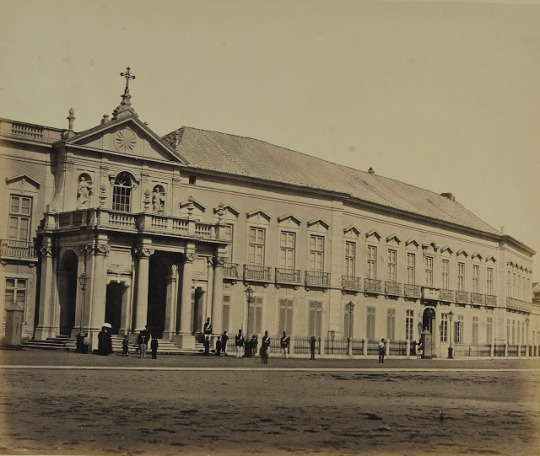
Ordering furniture, lamps, carpets and fabrics for upholstery and curtains from Paris, all of the most elegant and quality that existed.


The south wing of the Mafra Palace, which had already undergone alterations in 1855, also suffered some alterations again at this time, in order to receive the monarchs, namely in the hunting seasons of which D. Pedro V was an adept, with a room exclusively dedicated to this monarch.
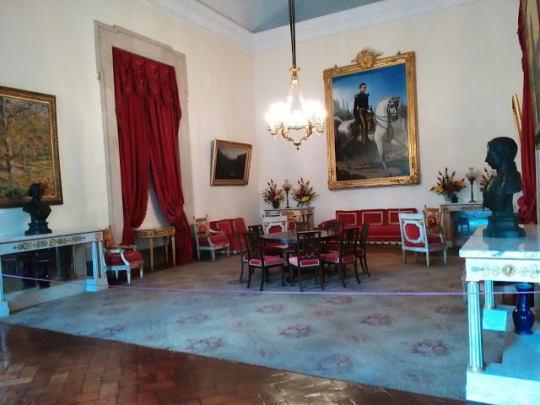
It was in that year of 1858 that D. Pedro V had the noble idea of founding in Lisbon the high literary studies that did not exist in Portugal and which after his death had little development. He gave part of his civil list to buy inscriptions, which constituted the endowment of a new establishment of higher education, the Higher Course of Letters,
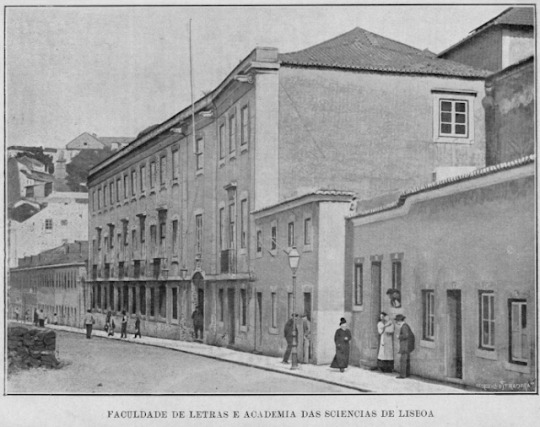
where the chairs of history, ancient literature, modern literature, philosophy of history and philosophy were created transcendent, chairs that were conducted by Lopes de Mendonça, Rebelo da Silva, Jaime Moniz, etc. That was the foundation, for which D. Pedro V was very sympathetic, and often the monarchist scholar who loved letters and science, would listen to the teachers' lessons, preferably listening to the inspired and eloquent word of the great Rebelo da Silva. It was, together with his wife, Princess Estefânia de Hohenzollern-Sigmaringen, that Pedro founded public hospitals and charities. In fact, fulfilling the wishes expressed by her after a visit to the Hospital de São José, where the queen was impressed by the promiscuity with which children and adults were treated in the same ward. Queen D. Estefânia offered her wedding dowry so that a children's ward could be created there, and she also expressed the desire to build a hospital exclusively for poor and sick children.

But the trials that the unfortunate king had to go through in his short reign of just six years were not yet complete. Two facts followed one another that deeply hurt him, one as a king, and the other as a dedicated and loving husband. Being a staunch supporter of the abolition of slavery, an episode dates from his reign that attests to the monarch's conviction in this matter and that simultaneously demonstrates Portugal's fragility before the great European powers, when in 1859 the slave ship was seized in 1859 Frenchman Charles et Georges,

and his commander was arrested. The French government not only demanded the release of the ship, but for that purpose sent a squadron to the waters of the Tagus to take that ship and face the Portuguese flag, as well as demanding a large indemnity to the Portuguese government. Still the disputes with England for the dominions in Africa and with the Holy See. As husband, he saw that same year, on July 17th, his wife died at the age of twenty-two, victim of diphtheria angina. The disease would have been contracted during a visit to Vendas Novas. D. Estefânia's last words would have been: "Comfort my Pedro!".
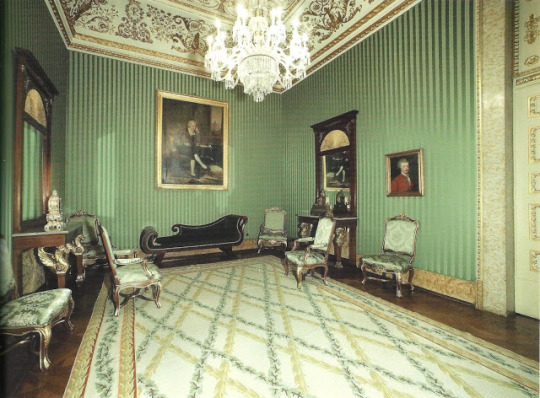
The death of D. Estefânia left D. Pedro inconsolable with such a great loss. The heartfelt letter that the monarch wrote to the Duke of Terceira, then president of the council of ministers, was a memorable letter, passed on from such profound melancholy and written with eloquent simplicity. "Me and my people have been companions of misfortune, the conscience tells me that I have not abandoned them." So it was, the people also did not abandon him in this supreme anguish; "It was a heart for the earth and a spirit for heaven," added D. Pedro V, referring to the wife he had lost. The death of D. Estefânia greatly dismayed not only the king, but also the people in general, who had developed great affection and affection for her.
The funeral procession of D. Estefânia was conducted under great consternation to the Monastery of São Vicente de Fora.
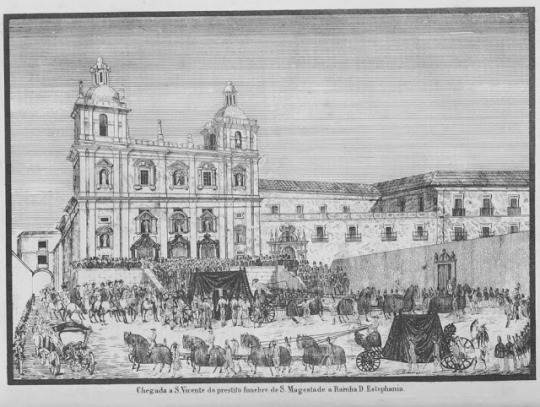
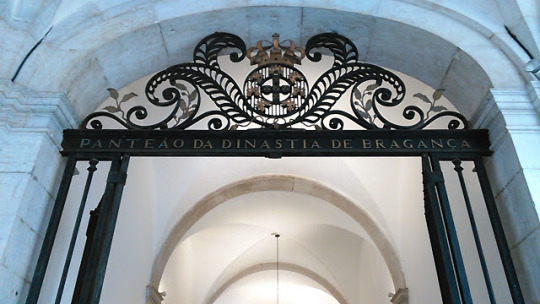

Due to their early death, the couple did not have any children. However, D. Pedro V's speeches were always full of high ideas, and he wrote in a nervous and very concise style, which sometimes went into obscurity. Critics accused this enigmatic style, and said that el-rei, who knew German culture well, was sympathetic to the German philosophy influenced by his father D. Fernando. The truth is that he sought only to embody in the smallest number of words possible the greatest possible number of ideas. It was not limited to speeches or intellectual activity. In the Revista Contemporânea de Portugal e Brazil

he wrote with the pseudonym Azonbolos, a study about the taking of Gaeta by the Piedmontese troops. Many fragments of philosophical and moral studies were mixed with his papers after his death. D. Pedro V often vented his most intimate and distressing pains with Joaquim Pinheiro Chagas (1808 - 1859), his secretary. He had been his vigil companion in the hours following the death of D. Estefânia, in which the sad king, after a few minutes of restless sleep, woke up in great fits of tears, and embraced his secretary, who, having also since the woman he loved dearly died, he knew how to understand and how to console that sincere and profound pain.

The death of this faithful and devoted friend was yet another profound and unexpected blow for the king, because Joaquim Pinheiro Chagas died in the force of life when he was only fifty years old. In 1860 the disastrous result of the realization of an idea he loved, the establishment of a recruit deposit in Mafra, also made a deep and painful impression on him. The poor conditions in which this deposit was organized produced the disaster, but D. Pedro V felt it deeply, not only because he could partly be responsible for the death of so many recruits who expired there in that slaughterhouse, but also for see one of the projects shattered in smoke, from which he thought the most profitable fruits would result. It is also after the death of his wife, D. Estefânia, that King D. Pedro V founded in Lisbon, the Hospital da Bemposta in 1860, in the old gardens of the Bemposta royal farm, a hospital destined for poor and sick children as a wish of the your wife. The works of this hospital begin in the reign of D. Pedro V but will only be inaugurated later, on July 17th, 1877, after his death, by his brother D. Luiz I already as king of Portugal and designated as Hospital D. Estefânia.

The monarch was not given to grand state ceremonies, as well as invitations to other distinguished foreign statesmen, he felt that Lisbon was not in a position to receive them like the palaces themselves. It concludes that foreigners could not assess our degree of poverty. 19th century Lisbon does not have hostels for any more demanding visitor, not even the existing palaces.

D. Pedro V was Duke of Saxe-Coburgo-Gotha,

Grand Master of the military orders of Christ,

S. Bento de Avis

and S. Tiago da Espada;

grand cross of those of the Tower and Sword

and of Our Lady of the Conception of Vila Viçosa;

knight of the Order of the Golden Fleece, of Spain,

and of the Supreme order of the Most Holy Annunciation, of Sardinia;

first-class knight, in brilliants, of Hohenzollern;

grand cross of orders from Cruzeiro do Sul, Brazil;

from St. Stephen of Hungary, from Austria;

the Black Eagle, from Royal Saxony; the Dutch Lion, from the Netherlands;

the White Falcon, by Saxe-Weimar;

the Legion of Honor, France;

by S. Fernando and Mérito, by Duas Sicílias.

D. Pedro V respected the important politicians of his time, and was a great respecter of Alexandre Herculano, whom he visited frequently, entertaining with the notable historian scientific discussions; he spent long hours, when he was in Mafra, consulting chronicles and other old books from that valuable library. He dedicated himself to music, playing the piano excellently, he was notable in fencing, a good marksman, and he drew with taste and ease, having the special gift of characterizing a person at first suddenly with three or four strokes, leaving many of his caricatures notable for grace and for the speed and firmness of the stroke. Hunting was one of his favorite pleasures. It was he who completely abolished the hand kiss, a palatial etiquette that was one of the remains bequeathed by absolute sovereignty, and refused to confirm the death penalty. He did not want to see the citizens, among whom he was the first, bend his knee in his presence, because that bow belongs only to Divinity as it belongs to him alone to take the life of men. He understood that the hand-kissing ceremony was an act of servility unworthy of every self-respecting man, as he understood that human justice is solely responsible for correcting delinquents, by seclusion and work, to restore them to society, purified and provided. King Pedro V ends all this, saying: "kneel down… .a man only kneels before God, who is above him, all other men are brothers", "no one has to kneel before anyone" and "kiss the hand… we can be kiss the hand of a father to a mother… now I am not a father of the Portuguese… I am their brother" "so no one else will kiss my hand" "a Portuguese who cares of another Portuguese shakes his hand and it is with a loyal handshake that expresses their friendship ".
King D. Pedro V undertook many trips from north to south of Portugal, to the city of Porto where he made several visits and inaugurations, as in 1860 in the company of his brother D. Luiz I, the inauguration of the Porto Agricultural Exhibition, visits the chain da Relação do Porto, where writer and novelist Camilo Castelo Branco (1825 - 1890) and Ana Plácido (1831 - 1895) were imprisoned, as well as an important visit that same year to Setúbal.
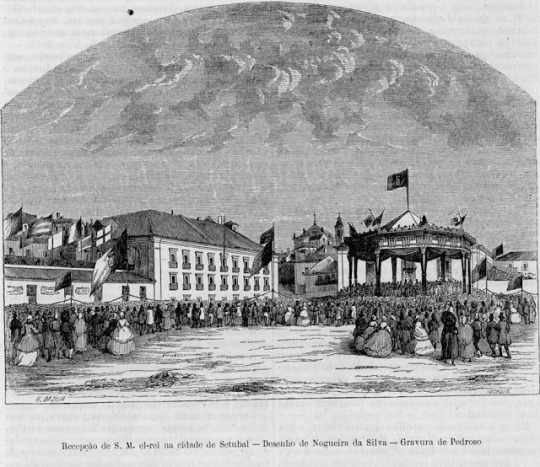
In 1861 he returned to Porto and Braga where he made state visits and some important inaugurations as a symbolic inauguration on September 3rd of that year, of what would later become the Crystal Portuense Palace.

With regard to advances in the study of sciences, in the year 1861, King D. Pedro V had the initiative to endow Lisbon with an Astronomical Observatory.

For that purpose, the decree for that purpose was already promulgated on February 14th, 1857, resulting from the initiative and funding by King D. Pedro V on January 31st, 1857. Thus, on March 11th, 1861, construction of the Real began. Lisbon Astronomical Observatory at Tapada da Ajuda in Lisbon.

In October 1861, a trip that the king undertook to Alentejo, more precisely to Vila Viçosa, with his brothers, D. Augusto de Bragança and D. Fernando Maria Luiz de Bragança,
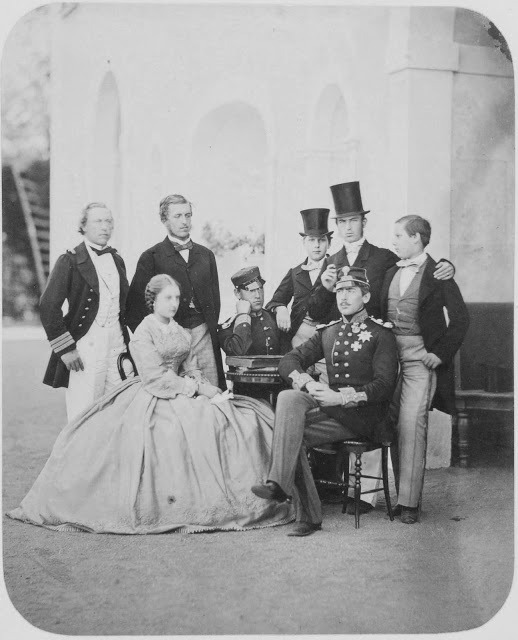
had the most dire results. In that province, they contracted malarial fevers (as they were called at the time), after what appears to have been drinking contaminated water from a well, which soon took on a profoundly serious character. The infant D. Fernando Maria Luiz de Bragança passed away on November 9th, and two days later, on November 11th, King D. Pedro V also died, in the same room where he was born in the Palácio das Necessidades, at the flourishing age of twenty-four years of the same disease, which today is known as typhoid fever, according to the opinion of doctors. It was then that it became known how much he was deeply esteemed and loved. The people only heard of the serious illness of the king and his brothers, they grouped together in great distress around the palace. First there was only anguish and anxiety, then suspicions of crime began to arise, and the death of the infant D. Fernando Maria Luiz de Bragança, the very serious state in which the infant D. Augusto de Bragança was found and the perfectly desperate state of the king , further confirmed the poisoning ideas. Of note is the visit that the king made to Castelo de Vide, on October 7th, 1861, about a month before he died, thus perpetuating the memory of a king who nicknamed Castelo de Vide "Sintra do Alentejo". The monarch had been received in the region with evidence of great esteem on the part of the population, and the news of his death caused great consternation.

The king's death added to the excitement of the city of Lisbon. The king's two brothers, D. Luiz I of Portugal and D. João de Bragança, who were traveling, traveling, hurriedly returned to their homeland, and arrived shortly after the death of D. Pedro V. Attacked by a disease, with symptoms identical to those of of his brothers, D. João de Bragança also died, in the following month of December. The funeral of D. Pedro V was the most painful expression of mourning that Lisbon has seen since 1834. A funeral without carriages, since from the Palácio das Necessidades to the Pantheon of São Vicente de Fora, it was the procession followed by a countless crowd.
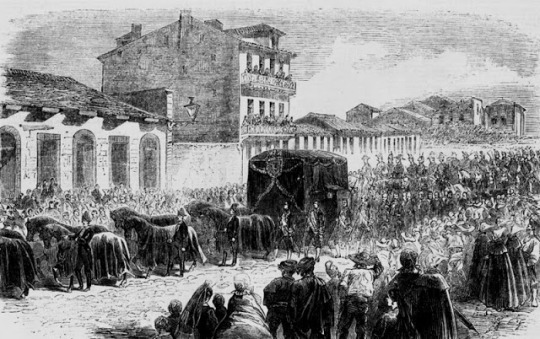
Members of the nobility and clergy were present, deputies and senators, soldiers and writers accompanied the king to the grave who had opened a horizon of hope in national life. Regarding this, Raimundo António de Bulhão Pato (1828 - 1912) wrote: "It was the first time that I saw Alexandre Herculano cry like a child." D. Pedro V lies in the Royal Pantheon of the Bragança Dynasty,
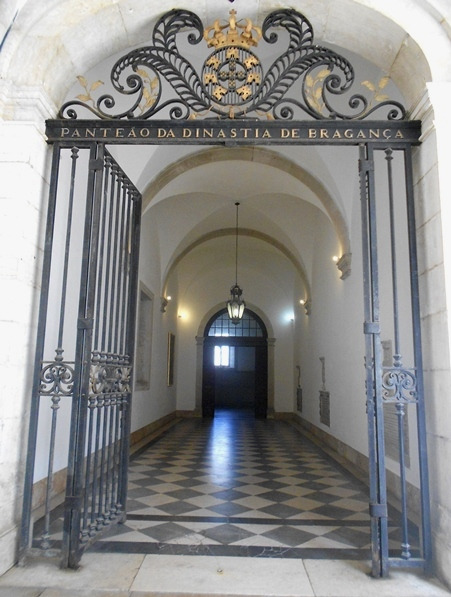
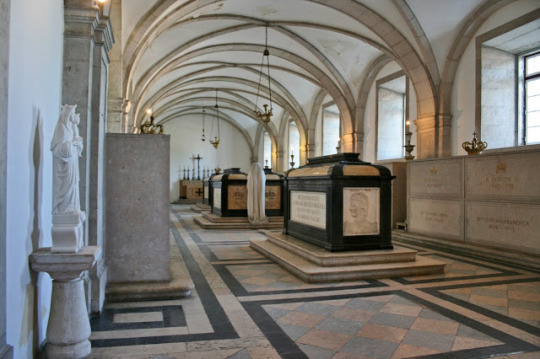

in the Monastery of São Vicente de Fora, in Lisbon. All this gave rise to the Christmas riots, classified by José Estevão in the following famous sentence: "It is the anarchy of pain protesting against the despotism of death." The feeling was general and profound throughout the country. Shortly afterwards, everything was said, since D. Pedro V died a virgin, until he would have been poisoned by those whose personal power overshadowed. Several figures were found guilty without proof, such as the Marquis of Loulé, who intended to take revenge on the monarch for the first resignation of his Government, others blamed the Spanish banker D. José de Salamanca y Mayol (1811 - 1883), creditor of the State for sums he had invested in the construction of the first railway lines and in whose residence D. Pedro V would have dined the night he returned from Alentejo. There are scenes of uncontrolled weeping, contempt, and rioting, crimes on the street by some to avenge the king. Lisbon does not take comfort from the loss it suffered. With the young monarch D. Pedro V it is already a good part of the 19th century that he is going to bury, the belief in the initial values of Liberalism, the fiery support for the constitutional cause, the pride of the country that has yet to be hurt. The following phase of D. Pedro V became famous among many: "Man is short when his tongue is cut." More recently, the writer, novelist and historian Ruben Andersen Leitão (1920-1975), considered D. Pedro V in his work "D. Pedro V Um Homem e Um Rei", as the "first modern man in our country".

However, he can consider himself, assessing for all his life as a monarch, King D. Pedro V as, in addition to the first modern man in Portugal, a king with great competence, endowed with a great culture and a visionary for the your time. He was, like one of his nicknames, a king of hope ... Who knows if Portugal would have taken a different path if D. Pedro V had not disappeared so soon ?!


8 notes
·
View notes
Text
Building for Lewisham: Concerns over plans for estates
Online Business Reviews
The council has promised to listen to residents' concerns about plans to build homes on existing estates.
In 2019, the council looked into bringing forward a series of sites for infill development, where vacant or under-used parcels of land within existing urban areas are developed.
They form part of the Building for Lewisham programme, a plan to build council homes across the borough to tackle the 10,000-strong housing waiting list, mainly by the council’s housing company Lewisham Homes.
According to a report on its programme requirements, which went before mayor and cabinet on Wednesday (May 19), the earmarked sites include Valentine Court in Perry Vale, estate in Dacres Road, Perry Vale, Drakes Court in Forest Hill, Greystead Road Estate in Forest Hill, Hensford Gardens in Sydenham, Markwell Close, Prospect Close, and Peter’s Path in Sydenham, and Walsham Road in Telegraph Hill.
See more: Lewisham plans to build council homes on existing estates
All the proposed schemes, which are in the early stages, are still subject to planning permission and further feedback from locals.
Following section 105 consultations with secure council tenants on the estates, mayor and cabinet agreed to “continue with the proposals to build to new homes”.
Abbey Darling, a resident of Greystead Road, spoke at the meeting on behalf of people living on the estate and surrounding roads.
She said more than 70 per cent of residents signed a petition against the plans going ahead, while more than 100 people signed online.
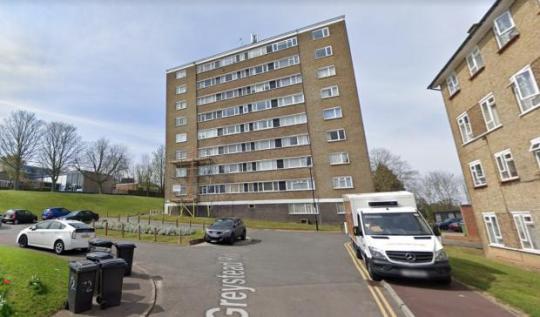
Greystead Road
Ms Darling described the consultation process as “inadequate” and said the time given to respond was “utterly shameful” during a pandemic.
However, Cllr Paul Bell, cabinet member for housing and planning, assured residents that the consultation was only a small part of the engagement process and people would have many opportunities to feed into the plans.
Ms Darling said the infrastructure on the estate is “unsafe” and “not viable to sustain up to another 250” possible new residents, while multiple repairs have been “neglected” following a basement flood on the estate.
She added: “Building on green space during a climate emergency is criminal.
“The section 105 letter to residents contains an image showing ‘permanent loss of amenity up to the edge of the boundary’, destroying all of the established boundary trees and decimating the green space which has been a vital lifeline to residents throughout the pandemic and beyond.
“There will be considerable damage to the root systems of existing trees and extensive loss of light and privacy for estate residents.”
Ms Darling also raised concerns about a local school.
“These plans sit right next to a primary school – this will make the Covid-safe drop off and pick up point for children totally inaccessible.
“It will make the site totally unsafe for small children during construction and it will mean a four-storey block looking directly into a primary school playground, compromising the privacy and safety of all children who attend that school.”
She said construction and more residents would “make air quality for children even worse”.
“For a borough which has witnessed child fatalities due to air pollution, clean air for its children should be at the top of its priority list.
“I assure that the residents of Greystead Road will fight to protect this green space for the children that live here and go to the school,” she said.
Jamila Astwood, who lives on the Dacres Estate, spoke on behalf of residents and also criticised the consultation process.

Rosemount Point on Dacres Estate
“We are really concerned about the speed at which this is being pushed through and feel that the distraction of the coronavirus pandemic has been used to take advantage of us and our relative inexperience in these matters,” she said.
Ms Astwood said residents were concerned about the consultation not being transparent, the impact on green space and air quality, as well as the loss of trees, wildlife, and views.
“This is important as evidenced by Covid-19, the need for green space is imperative for all of our well-being,” she said, adding that many flats have young children who can use the green space for safe play.
She said the estate could become “concrete jungle” and that there were very few details about what was planned.
Ms Astwood added that the lack of transparency from the council and Lewisham Homes has had a “significant” impact on residents’ wellbeing.
Perry Vale Cllr John Paschoud spoke at the meeting and said he has been “really impressed with the consultation process” so far.
“This isn’t the formal planning process […].
“Jamila has made the point that she hasn’t been given full details of what anybody proposes to build on the Dacres Estate – that's because nobody has drawn up any detailed proposals yet because they’re trying to go the extra mile and get more information to form that before they plonk something on the table for either approval or refusal by a planning committee,” he said.
When Cllr Bell presented the report he said engagement with residents is an “absolutely vital part” of the Building for Lewisham programme.

He said the section 105 consultation is a statutory requirement and forms only part of the process.
“We will seek to minimise the loss of green space in schemes where there is an impact, and any trees lost will be replaced.
“Where there is a loss of green space in a proposed development we will also seek to deliver a net increase it the number of trees on site,” he said, adding that concerns about privacy would be addressed through planning policy requirements.
Cllr Bell said the proposals are about housing people with no home and that he was happy to meet with residents to speak about them.
“What’s become very apparent during the pandemic is that we have a number of people who are severely overcrowded in Lewisham, living in properties that are not suitable.
“We have supply issues with bigger homes, and the stories of children who have been trying to study in sometimes temporary accommodation where everyone’s in the same room are harrowing,” he said.
We at Online Business Reviews provide useful tips and resources on online marketing processes, strategies, tools and much more that would be helpful to any online marketer.
https://onlinebusinessreviewsblog.blogspot.com/2021/05/building-for-lewisham-concerns-over.html
0 notes
Text
Sydney Southwest Metro Upgrade Contract Awarded
Sydney Southwest Metro Upgrade Contract Awarded
Downer EDI Works Pty Ltd has signed a contract to upgrade stations on the T3 Bankstown line between Sydenham and Bankstown to metro rail standards.
The Sydney Metro City & Southwest project consists of two parts: the Chatswood to Sydenham section, which involves the construction of a new metro line connecting to the Northwest section of Sydney Metro at Chatswood, and the Sydenham to Bankstown…

View On WordPress
#ats#Australia#bi#Construction#Downer#Downer EDI#EC#gr#ICE#Infrastructure#IT#KISS#Metro#NEC#News#Proje#RAI#RID#Services#stations#Sydney#Sydney Metro#US
0 notes
Text
ielts classes near me
The IELTS (GT) is different in reading and writing. All students take same listening and speaking test. Usually listening, reading and writing are on the same day however, speaking test can be before or after the same day as other skills. As it is an international test, most of the examiners speak with British or Australian accents. For spellings, students are supposed to take either US or UK, but you cannot mix both.
IELTS Listening Information
IELTS listening has four sections for testing. First two sections are based on social topics whereas, section two has academic topics. Same listening test is usually given to everyone. It has 40 questions, and all are compulsory to attempt. This test lasts for 40 minutes. Every section has 10 questions in it and you listen every recording for once to answer. You will be given 10 minutes extra to transfer your answers on the answer sheet.
Listening band score can be easily calculated like this:
If you have 23/40 correct answers: 6 bands
If you have 30/40 correct answers: 7 bands
If you have 35/40 correct answers: 8 bands
Never leave an empty space as there is no negative marking in IELTS. You will be given extra time before and after listening test to see your questions and answers. Moreover, you can write on your question paper. Your answer sheet will be marked for your result. It is a useful way to keep notes for your listening on your question paper.
IELTS Reading Information
Reading test comes right after your listening test and no extra time is given to transfer your answers on answer sheet. Three reading passages are given in academic and general training reading tests. Each passage is long and usually taken from authentic sources like books, magazines and newspapers. Language of these passages is complex academic vocabulary, a variety of sentence structures and some diagrams, maps and illustrations are there to unravel.
GT reading also contains three passages, each one getting complex and difficult in terms of language, vocabulary and topics. Both test types have 40 reading questions. You get one point for every correct answer and there is no negative marking in this section too. Many students fail this test due top their poor time management skills. It is strongly recommended to spend almost 20 minutes on each passage to successfully complete the test on time.
There are many issues in non-native students’ reading test which can be discussed with you. Please feel free to talk to us on the tips/suggestions to improve your reading test score. You can use our page Improving your Listening to get better scores in IELTS listening.
IELTS Writing Information
This test has two parts: Task one is about a report for the academic test
Task two is mostly an essay for both tests. This test is also of one hour and no extra time is given to read your answers. Task one is of 20 minutes whereas task two is of 40 minutes. Task one is of 150 words and task two is of maximum 250 words. To have better advice on Essay types and word limit, use our page IELTS Essay Advice
IELTS general training test is usually taken from immigrant who want to get their permanent residence in native countries. In this paper, students are asked to write a letter for task one. You can find different types of letters in IELTS GT Writing Task 1page.
IELTS Academic is for those who want to enter in college and universities. Most people take this test before getting admission in any English-speaking country.
IELTS Speaking Information
There are three parts in speaking test. In first round, you have an interview with your examiner about yourself. The second round consists of a talk and the last round is a discussion on a topic with your examiner.
The total length of this test is around 11-14 minutes which can be 4-5 minutes for part one, part two 2-3 minutes and part three 4-5 minutes. Speaking test will be face to face with your examiner and examiner will record your response in a recorder for transparency purposes. The test is usually marked on your fluency, vocabulary, grammar and pronunciation. All of these categories are accounted for 25% each. For the common topics in speaking, you can find this link IELTS Common Topics. Part one will consist of 12 questions and in part three you are supposed to answer five more questions. Also, try to answer in detail and expand the information for section three in speaking. Please note that examiner is only interested in your speech production and language. There is no need to intentionally use body language in your speaking test until you possess it naturally with you.. ielts classes near me
Level 1/6 Washington Way
Sydenham, Christchurch [email protected] 0211 942 030
#pte christchurch#pte classes near me#ielts and pte tutorial christchurch#ielts course christchurch#pte test christchurch#pte test dates christchurch#pte test dates in christchurch#pte study Christchurch#pte study new zealand#pte study#pte nz
0 notes
Text
3. ENGLAND ROUSED BY U.S NAVAL MENACE BUT CAN’T DECIDE IF BIG SHIPS ARE OBSOLETE

London, January 1st – “John Bull, after resting on his oars since the surrender of the German fleet, has suddenly discovered a new naval menace in America and Japan. The clubs are full of gossip and of rumours, and the papers full of letters from admirals and other experts. The sudden agitation recalls the stir here when Germany launched a building programme in 1900 that was taken to mean a challenge to British sea superiority.
“It would seem natural if Britain feels that America and Japan are building so many great ships that her grasp on the trident is being loosened that ships should be laid down, here in answer to the assumed threat. But two considerations prevent this being done.
Money is lacking
“One is the serious financial position which renders if doubtful whether England can foot the bill at the present price of warships for a super dreadnought race with the United States. The other is the belief of a large section of naval opinion that the super dreadnought is obsolete, that America and Japan are wasting their money, and that England as so often as before must now show the way by constructing new submersibles or flying engines of sea warfare that will make great battleships as helpless as a ship of line of Nelson’s time.
“Early in 1919 the Admiralty decided to stop all naval building. This was done for two reasons apart from the compelling one of economy. It was hoped that the United States and Japan would also slacken their preparations at sea when they saw that England was not building. The Admiralty felt that time was needed to assimilate the lessons of Jutland and the submarine war and decide what for of Navy in the future should assume. The super battlecruiser Hood, completed after the war, is believed to be the most powerful fighting machine afloat, but her sister ship was broken up on the stocks and the anti – capital ship faction at the Admiralty denounced the Hood as obsolete before she was put in commission If they are right and the Hood is obsolete, so are all great ships the United States and Japan are building and are planning to build.
“For a year and a half the Admiralty has stood put and done nothing. Recently spurred on by the advocates of the battleships, who see with horror that the American fleet two years as things are going now, we will be more powerful than the British, the Admiralty decided on a new naval programme of big ships. Details of this programme, of course, are secret. But the fact that the programme had been adopted and leaked cause the present storm.
Big, fast ships
“I understand that in its essentials the plan provided for a building of great and superlatively fast ship to cost something like US$45’000,000 apiece. The opposition from the submarine and air enthusiasts have proved too strong and the Government has decided that the new programme is not for the present to be carried out. The Committee of Imperial Defence has been ordered by the Cabinet “to institute at once exhaustive investigation into the whole questions of naval strength as affected by the latest developments of naval warfare”. Until the Government is satisfied with the report of this committee, it is officially stated that no programme of new construction will be sanctioned.
“The place and usefulness of the capital ship in future naval operations is to be the subject of the committee’s deliberations. The committee will consist of several heads of government departments, the First Lord of the Admiralty, and the First Sea Lord, the chief of the General Staff and the directors of naval and military intelligence, and it is already being attacked as in the main made up of men not qualified to pronounce on naval subjects.
Tells English views
“I am able to give some extremely important details concerning the views held here regarding the American menace.
“The primary consideration in all British naval calculations now is the fact that there is no possible future sea enemy in Europe. The German fleet does not exist and the British opinion the French and Italian navies proved themselves contemptible and worthless during the Great War.
“Accordingly, when the size and strength of the British Navy are considered, it is clear that any naval programme now adopted can have in view the only two serious fleets in being, ours and the Japanese.
“Sir Percy Scott[i], torpedo and gunnery expert, who vainly warned England before the war of what the submarine could do, is the public spokesman of the anti – capital ship school of thought. His view about the possible naval conflict with American can be summed up authoritatively as follows:
“There are two reasons why, in considering America, the building of more great battleships is wrong. One factor is purely naval and the other is no less important one, one of psychological.
Naval opinion must recognise that in the event of war the battle fleets of the two powers could not fight each other. Were the American fleet twice as strong as ours, it could not enter British waters and operate there, three thousand miles from its base, exposed to the full striking force our fleets supported by submarines, mines and other weapons. Nor could the British fleet, were it much stronger than it is, go to American waters and there brings to action the concentrated American sea power. Our fleet, too, would be too far from its base and the risk would be too great. England and Germany, separated by a narrow shallow sea, were compelled in the main to keep their big ships sealed up in harbour and not to seek each other. England and America would certainly have to adopt the same tactics.
“Now for the factor of psychology. There is nothing to rouse public interest like a race. The spirit of emulation and competition between the English and American peoples would be excited, just as we saw with Germany in the decade before the war, if we each tried to build the largest number of super dreadnoughts. This sort of thing gives rise to a dangerous feeling, and may itself tend to bring on a calamity which both people realise would be terrible for themselves and the world. But since these costly machines even if constructed could not fight each other, why should we build them? If Americans are foolish enough to do so, let them go ahead. They will soon get tired of the game, if we won’t play it too.
“I asked: In the event of war what form in your opinion would that war would take?
He replied: “You may take it as an axiom that the two great fleets, the battleships of each power, would remain in their own waters and not attack each other. The war would in the main be one of commercial destruction, since the British Isles and your country would both be immune against serious attacks. We would send out cruisers all over the world and stifle your commerce. You have not the small fast cruisers that we have, but as against this we are dependent on sea communications and our trade routes are more vulnerable. You would attack them with converted merchantmen and submarines, and the results a few German commerce raiders obtained against trade before they were run down in 1914 shows how unpleasant you could make things.
“Against Germany we had the advantage that with the exception of the few ships that got out or were out at the beginning the whole German naval force was in the bottle and we held the neck. Your great number of port on the Atlantic and the Pacific would make it easy for you to send out ships whenever you liked that could go anywhere. We would catch and destroy many of them, but outside the European waters you could bring our commerce to a standstill. You could not win the war against us by these methods, unless the continent turned against us too, but since you are self – supporting we could not defeat you, and the thing might drag on interminably. That is one of the reasons why it must never be allowed to happen.
“The other school of thought that believes in more big ships and in maintaining a superiority in dreadnoughts over any other powers is headed by Lord Sydenham[ii]. The chief of the Admiralty, whose views carry most weight in these respects, do not permit their opinions become public, but from current gossip I believe Admiral Beatty[iii] is the real head and front of the pro – battleship faction. Jellicoe[iv], as is natural in any case when the two men are involved, is said to take the other side.
“Lord Sydenham does not accept the view that naval wars are not to be won by fleet actions. His school contends that the striking force of the British Navy must be able to go out at any time and seek and defeat the concentrated sea power of any other country.
“The controversy is complicated by the advocates of submersibles battleships and flying dreadnoughts. These two phrases may be a little exaggerated at the moment, but there are submarine and air experts who seriously contend that within few years great warships with heavy guns will be able to sail the sea submerged and aircraft will exist capable of striking any ship on the surface. Submarines were constructed here at the end of the war which carried each a 13 – inch gun for the purpose of bombarding the Belgium coast, and this fact is cited by the anti – battleship sailors. Of course if these men are right it is recognised that to build super dreadnoughts is merely wasting money, but whether they are right is one of the questions that the Committee of Imperial Defence must settle.
Bottomley’s ideas
Horacio Bottomley[v], MP, is not known for his friendship to the United States. John Bull, which he edits, has the largest circulation of any organ of opinion among the general public. It is read weekly by millions of Englishmen who make it their Bible, and for this reason whatever Bottomley says is taken seriously to political circles. How the naval controversy is beginning to affect the man in the street can be gauged better by quoting some of Bottomley’s remarks than by any analysis I could make. Bottomley declared this week:
“Take America first. For the moment I am not discussing any question of policy, but simply endeavouring to ascertain the facts. The United States, for all of that her president was the great protagonist of the League of Nations, has entered hell for leather into the race of armaments. She is building as fast as she can – We will ask why presently”.
Huge American fleet
“The constructional programme approved by the American Congress and now in course in execution includes no fewer than four first class battleships to be completed by 1923, and another eight to be ready for sea by 1924 – 1925. Remember, every one of these vessels has been laid down since the battle of Jutland, from which naval officers the world over have been drawn important lessons, although our government has so far foolishly withheld the official report of that engagement – which I fancy might prove a stimulant to the public imagination. Still, America is building on the strength of the late war’s naval lessons.
And the same with our wide awaken ally, Japan. Here again the facts are easily available. Last July the Japanese Parliament sanctioned estimates providing for four battle cruisers – these eight new vessels, all of the most modern type, to be completed not later than 1926. It may be said, of course, and with a measure of probable truth, that America is building against Japan, and Japan against America; but Great Britain, however well assured she may be of the peaceful intentions of her rivals, cannot well be indifferent to a state of affairs which if it persists unaltered, will rob her of the faintest claim or title to be called mistress of the seas.
To decide quickly
“It is the plain and bounden duty I the government to decide without delay what is to be the British policy in the light of what can only be regarded as a gathering menace to our maritime power.
“If a heavy warship building programme is the only form of maritime insurance available, the only means of safeguarding our food supply – of keeping intact the lifeline that connects us with the overseas granaries upon which still we are foolish enough chiefly to depend – then we must foot the bill and pray for some wizard of a chancellor to find us the hen – roosts to rob. But is there no other way.
“And that brings us to policy. I recognise to the full that we do not live in a world governed by the lofty idealism of the League of Nations, that the writ of the League’s Court of Arbitration does not run in America, and that there are features of the foreign policy of the United States that may well alarm thoughtful observers I am not concerned to deny. At the same time, I am not going to believe, in the absence of the most urgent and direct evidence, that it is with an eye on this country’s position in the world that America is building her mammoth navy. The same goes without saying in the case of Japan, who up to now has fulfilled her treaty obligations to the letter, leaving us no ground for complaint. I suggest, therefore, that it might be possible for Japan and Great Britain, in alliance, to offer America such guarantees as would warrant her in slowing down her naval programme, or at any rate pruning it to such an extent as to relieve Europe of suspicion a to her bellicose intentions.
Acid test of sincerity
“This, I submit, would be the acid test of America’s sincerity. We will put behind us the extravagant idealism of Woodrow Wilson – now finally disowned by his countrymen, and driven into political obscurity; we will try to forget the breach of faith involved in America’s selfish refusal to accept her obligations under the Treaty of Versailles; we will say not a word about the sources of the wealth that she now possesses to expend upon her giant fleet. The dreamer Wilson now makes way for a Republican president, a man who may, I think, be taken as typically representative of the great bulk of American opinion. Very well then, it’s up to Harding. If he values the friendship of Great Britain, if he worships honesty at the shrine of any other power, he will doubtless be willing to carry out an exchange of views, with the object of discovering some common basis of action in world politics and so avoiding the necessity of huge and wasteful expenditure.
“At such a solemn round table, Japan might be represented, or we could separately undertake to submit to her ministers an agreed basis of policy. Apart from some such arrangements, the British taxpayer must begin to muster his millions. There is no third course” – By John Lloyd Balderston – McClure Newspaper Syndicate – El Paso Herald (El Paso, Texas, USA), Saturday 1st January 1921, page 1 to 2
[i] SCOTT, Percy Moreton, 1st Baronet (1853 – 1924). British Royal Navy officer and a pioneer in modern naval gunnery. During his career he proved to be an engineer and problem solver of some considerable foresight, ingenuity and tenacity. He did not, however, endear himself to the Navy establishment for his regular outspoken criticism of the Navy's conservatism and resistance to change and this undoubtedly slowed the acceptance of his most important ideas, notably the introduction of directed firing. In spite of this, his vision proved correct most of the time and he rose to the rank of admiral and amongst other honours was made baronet, a hereditary title.
[ii] SYDENHAM CLARKE, George, 1st Baron Sydenham of Combe (1848 – 1933). British Army officer and colonial administrator. He was born in Lincolnshire, and educated at Haileybury, Wimbledon and the Royal Military Academy, Woolwich. He entered the Royal Engineers in 1868, served in the Egyptian Expedition and as Assistant Political officer during the following Sudan expedition. From 1885 until 1892 he was secretary to the Colonial Defence Committee, for which he was knighted as a Knight Commander of the Order of St Michael and St George (KCMG) in 1893. He was also secretary to the Royal Commission on Navy and Army Administration in 1888, a commission which did much to improve cooperation between the two services. In the late 1890s he was Superintendent of the Royal Carriage Department at Woolwich. He retired from the army in October 1901, when he had been appointed Governor of Victoria, Australia (1901 – 1903). He served in India as Governor of Bombay between 1907 and 1913. In 1913 he was elevated to the peerage as Baron Sydenham of Combe, of Dulverton in the County of Devon. He was also the first Secretary of the Committee of Imperial Defence. He adhered to the 'Blue Water' school of thought which saw the Royal Navy as Britain's primary defence against invasion. He advocated the use of small field fortifications which could be built cheaply and rapidly. This view was was based in part on the successful defence of Plevna in 1877 by Turkish forces using magazine-fed rifles and earthwork fortifications. His opinions on the strength of field fortifications were largely vindicated by the trench warfare of the First World War. He died at his home in Onslow Square, London, in February 1933, aged 84 and the barony became extinct.
[iii] BEATTY, David Richard, 1st Earl Beatty (1871 – 1936). Royal Navy officer. After serving in the Mahdist War and then the response to the Boxer Rebellion, he commanded the 1st Battlecruiser Squadron at the Battle of Jutland in 1916, a tactically indecisive engagement after which his aggressive approach was contrasted with the caution of his commander Admiral Sir John Jellicoe. He is remembered for his comment at Jutland that "There seems to be something wrong with our bloody ships today", after two of his ships exploded. Later in the war he succeeded Jellicoe as Commander in Chief of the Grand Fleet, in which capacity he received the surrender of the German High Seas Fleet at the end of the war. He then followed Jellicoe's path a second time, serving as First Sea Lord—a position that Beatty held longer (7 years 9 months) than any other First Sea Lord. While First Sea Lord, he was involved in negotiating the Washington Naval Treaty of 1922 in which it was agreed that the United States, Britain and Japan should set their navies in a ratio of 5:5:3, with France and Italy maintaining smaller ratio fleets of 1.75 each. During his tenure as First Sea Lord pressed hard for the return of responsibility for naval aviation from the newly formed Royal Air Force to the Royal Navy and maintained the morale of the Navy at a time of serious defence cuts. After his retirement he was appointed a member of the Privy Council in 1927.
[iv] JELLICOE, John (1859 – 1935). Royal Navy officer. He fought in the Anglo-Egyptian War and the Boxer Rebellion and commanded the Grand Fleet at the Battle of Jutland in May 1916 during the First World War. He later served as First Sea Lord, overseeing the expansion of the Naval Staff at the Admiralty and the introduction of convoys, but was relieved at the end of 1917. He also served as the Governor-General of New Zealand in the early 1920s. Following his return to England, he was created Earl Jellicoe and Viscount Brocas of Southampton in the County of Southampton on 1 July 1925.
[v] BOTTOMLEY, Horatio (1860 – 1933). English financier, journalist, editor, newspaper proprietor, swindler, and Member of Parliament. In 1906 he entered parliament as Liberal Party member for Hackney South. In the same year he founded the popular magazine John Bull, which became a platform for Bottomley's trenchant populist views. Financial extravagance and mismanagement continued to blight his career, and in 1912 he had to resign from parliament after being declared bankrupt. The outbreak of war in 1914 revived his fortunes; as a journalist and orator he became a leading propagandist for the war effort. In 1918, having been discharged from bankruptcy, he re-entered parliament as an Independent member. In the following year he launched his fraudulent "Victory Bonds" scheme which, when exposed, led to his conviction, imprisonment and expulsion from parliament. Released in 1927, he attempted unsuccessfully to relaunch his business career, and eked out a living by lecturing and appearances in music halls. His final years before his death in 1933 were spent in poverty.
0 notes
Text

Turkey-tail mushroom. Trametes versicolor
#Bruce Trail#Sydenham section#Niagara Escarpment#Bruce County#Ontario#Canada#hiking#hiking trail#forest#trees#wilderness#outdoors#landscape#7th Street W Side Trail#side trail#mushroom#mycology#fungus#turkey-tail mushroom#Trametes versicolor#photography#digital photography#DSLR#Canon 6D#photographers on Tumblr
28 notes
·
View notes
Text
CAN adds fake mountain to Edwardian house in south London
A fake Disneyland mountain informed this playful revamp of a family house in south London by architecture studio CAN.
Architect Mat Barnes, founder of CAN, renovated and extended the two-storey Edwardian house in Sydenham for his own family.
A rear extension is topped by a fake mountain
The project included adding a rear extension, topped by a fake mountain made of foamed aluminium. This element is designed in tribute to the Matterhorn Bobsleds ride at Disneyland in California.
This element gives the project its name, Mountain View.
"I loved the idea of elevating this heavy mountain on an unfeasibly thin structure," said Barnes.
Inside, the house is filled with colours, patterns and playful references
The imaginative details don't end there. The house also contains a monochromatic lounge filled with architectural fragments and a kitchen made from recycled chopping boards and milk bottle tops.
"We're surrounded by so many colours and textures in the outside world that to me it feels natural to bring many different patterns and fabrics inside too," added Barnes.
Red and white columns reference ranging poles
The renovation centres around the rear extension, which made it possible to create an open-plan living and dining space opening onto the garden.
Instead of fully demolishing the original rear walls, sections of them remain. They create a soft partition between the kitchen and dining area in the original part of the building, and the new lounge space beyond.
The kitchen is made from recycled chopping boards and milk bottle tops
These vibrant spaces are filled with contrasting colours, from the bright orange of the staircase underside to the royal blue of the trusses that span the ceiling. Even the kitchen is designed to stand out, with alternating panels of blue and grey.
There are further references to mountain geography, such as structural columns painted red and white like ranging poles, or the south-facing wall with its rough, rock-like texture.
Half-demolished walls separate the kitchen from the lounge
At the same time, there are plants and artworks spanning floor to ceiling, including a mosaic-tiled staircase emblazoned with the words "waste not want not" and a pair of cartoon-style arrows.
"The height of the room brings us such joy," said Barnes. "It feels somewhat grand or cavernous, with the variety of materials bringing texture and an unexpected warmth."
A monochromatic living room is decorated with architectural fragments
The living room at the front of the house was envisioned as a contrast to the multicoloured rear. Almost everything in this room is painted in the same shade of blue, including the architectural mouldings that decorate the walls.
Upstairs, a reorganised layout allowed Barnes to add an extra bedroom and bathroom. There are now four bedrooms in total, including a master en-suite.
The family bathroom features blue and white chequerboard tiling
The redecorated family bathroom features an orange ceiling and chequerboard-patterned walls, made of blue and white tiles – a reference to an old fireplace in the house.
The hallway is noticeably calmer, with white walls, exposed wooden floorboards and a glazed ceiling. Here, the changing daylight gives the space its character.
A mosaic-tiled staircase is emblazoned with a message
"It's a lovely house to live in, for the kids to play in, and for us to enjoy," added Barnes.
"It is also great to hear our daughter tell everyone she has a mountain on top of her house!"
One wall boasts a rough, rock-like texture
Barnes founded CAN in 2016, having previously been an associate at Studio 54 Architecture. His first solo projects include a blue and white striped house extension.
Photography is by Jim Stephenson.
The post CAN adds fake mountain to Edwardian house in south London appeared first on Dezeen.
0 notes
Text
Long stretches of Bruce Trail on Bruce Peninsula remain closed






While most of the Bruce Trail is again open, there are still some sections closed in Grey-Bruce, including some lengthy stretches on the Bruce Peninsula.
The Bruce Trail Conservancy has announced the gradual reopening of the trail in recent weeks after it closed down in April as public health measures took effect to help slow the spread of COVID-19.
But while much of the 900-kilometre trail from Niagara to Tobermory has since reopened, there are numerous stretches that remain closed.
In the Bruce Peninsula section, which runs from Wiarton to Tobermory, much of the Bruce Peninsula National Park remains closed and the Bruce Trail is closed from Little Cove to Crane Lake.
The sections of the Bruce Trail within the boundaries of Neyaashiinigmiing also remained closed as of Wednesday.
The closures include the main trail sections that cross the Chippewas of Nawash lands at Cape Croker plus side trails. A detour around the closed sections has been established using side trails and an unmarked detour along nearby Pitt Road and McIver Road. Full details, including maps are available at https://brucetrail.org/trail_changes
On Monday, the chief and council of Neyaashiinigmiing, in consultation with the Nawash Health Centre, extended its emergency closure of non-essential Chippewas of Nawash programs until the end of June. The Province of Ontario recently extended its state of emergency until June 19.
Chippewas of Nawash Chief Greg Nadjiwon said Wednesday that council regularly meets and the situation could change, but they are doing their due diligence and COVID-19 remains a serious health risk.
Nadjiwon said the Bruce Trail remains closed because it runs into a park at Cape Croker which also remains closed.
“That trail runs into the park and one does marry up with the other,” said Nadjiwon. “We have to be consistent in the messaging.”
In a statement from council on the extension of the emergency closure, it said there is further work to be done to physically prepare work spaces for the return of employees and customers, and also in drafting new workplace protocols that will allow colleagues and clients to interact with a minimum risk of disease transmission.
“These are important steps that we must get right the first time,” the statement said.
“We have been extremely fortunate in not having identified any positive COVID-19 cases in the community.”
The only other section of the Bruce Trail in Grey-Bruce that remains closed is a small stretch of trail on private land west of Walters Falls located in the Sydenham section.
No closures are being reported in the Blue Mountains section of the trail, which runs from the communities of Lavender to Craigleith, or the Beaver Valley section from Craigleith to Blantyre.





Are you looking for a Injury Lawyer in Toronto?
Neinstein Personal Injury Lawyers is a leading Toronto personal injury law office. Our attorneys feel it is their duty to assist you to uncover the government as well as wellness companies who can likewise aid you in your road to recovery.
Neinstein Injury Lawyers has actually handled serious personal injury claims across Ontario for more than Fifty years. Its locations of knowledge consist of medical, legal, and insurance coverage issues connected to healthcare negligence, car crashes, disability claims, slip and falls, product liability, insurance coverage disagreements, plus much more.
Neinstein Personal Injury Lawyers
1200 Bay St Suite 700, Toronto, ON M5R 2A5, Canada
MJ96+X3 Toronto, Ontario, Canada
neinstein.com
+1 416-920-4242

Visit Neinstein Personal Injury Lawyers https://neinstein.ca
Follow Neinstein Personal Injury Lawyers on Facebook
Watch Neinstein Personal Injury Lawyers on Vimeo



Contact Michael Wolkowicz at Neinstein Personal Injury Lawyers


Read More
#Neinstein Personal Injury Lawyers#Ontario Personal Injury Lawyers#Greg Neinstein#bike accident lawyers
0 notes
Link

Marc’s Obituary written by Nancy and Rick
Marc W. Steinberg, a master teacher, scholar, and mentor to several generations of college students, passed away on June 7, 2019 at his home in Northampton. He died after a year-long struggle with pancreatic cancer. Marc was born on June 21, 1956 and grew up in Pittsburgh. He attended Johns Hopkins University and the University of Michigan, where he received a PhD in sociology.
Marc was the Sydenham C. Parsons Professor of sociology at Smith College, where he had taught since 1994. Prior to his arrival at Smith, Marc had taught in the Sociology Department at Clark University in Worcester from 1991-1994. At Smith, he served as Chair of the Department of Sociology at various points (from 2004-2007, 2008-2009, and 2015-2017).
Marc was a beloved professor to his students. His courses were always heavily enrolled and well-regarded by students. He taught courses on sociological theory, social movements, rock music, power, and politics. He was known to mark his lessons with deliberate gestures of quirkiness and comedy, to help students grasp difficult concepts and to be sure that they stayed wide awake. Marc worked particularly hard to help his students learn to write effectively and to develop their critical thinking and analytical skills. He kept in touch with countless students, mentoring them years after they had graduated from Smith.
Marc was also a most helpful and thoughtful colleague to his peers. He read voraciously across a wide range of topics and routinely passed along notes of references to his colleagues when he came upon something he thought would be of interest to them.
Marc conducted painstaking historical research on work and workers in 19th Century England for his influential first two books, Fighting Words: Working-Class Formation, Collective Action and Discourse in Early Nineteenth-Century England (1999) and England's Great Transformation: Law, Labor and the Industrial Revolution (2016), which received the Zelizer Award for Best Book in Economic Sociology from the Economic Sociology Section of the American Sociological Association.
Marc's most recent book, Beyond Betrayal: The Priest Sexual Abuse Crisis, The Voice of the Faithful and the Process of Collective Identity (co-authored with Patricia Ewick) will be published in the coming months. Based on extensive interviews with Church members, the book charts the development of a group of Catholics who, in the wake of the priest sexual abuse revelations, acted on their feelings of betrayal by redefining what the Catholic Church might become and, simultaneously, defined and redefined themselves.
In addition to his books, Marc was the author of over 25 articles, receiving major awards for two of them, while writing numerous essays and book reviews, appearing on scholarly panels, and giving many conference presentations over the course of his three-decade long career.
Marc is survived by his brother, Alan Steinberg, sister-in-law, Patty Mooney, nephew Jared Steinberg, and many close friends, including his close friend Sabina Knight.
In lieu of flowers, gifts can be made to establish a fund in memory of Marc Steinberg to support student research either by check to Smith College, 33 Elm Street, Northampton, MA 01060 (please write Marc's name on the check) or online at www.smith.edu/giving (after selecting the amount, there is a prompt to enter the memorial name). Donations may also be sent to Friends of the Homeless: www.csoinc.org or Hospice of the Fisher Home: www.fisherhome.org, both of which were causes close to Marc's heart.
Ahearn Funeral Home
413-587-0044
Published in Daily Hampshire Gazette on June 19, 2019
0 notes
Photo

SOUTH AFRICANS AT IT AGAIN, ATTACK FOREIGNERS SABC REPORTS. SCORES of foreign nationals are fleeing informal settlements in the Durban suburb of Sydenham after some of them were attacked in their homes on Tuesday night and their belongings looted. They say the armed attackers told them that it will get worse if they don’t go back to their countries of origin. The refugees say the attackers told them that President Cyril Ramaphosa supports them. The people fleeing the settlements with their belongings and children say they don’t know where to go. The refugees say they reported the attacks to the police, but nothing was done. Officials from the eThekwini municipality are visiting the affected communities. Deputy Mayor Fawzia Peer has denied that xenophobia is behind the attacks in Sydenham. Addressing hundreds of displaced foreigners who sought refuge in a the park next to the Sydenham police station in Durban, Peer warned that a recent speech by President Cyril Ramaphosa in which he said that shops operating illegally will be closed has been misinterpreted. She says Ramaphosa only meant that people should follow the country’s laws and operate legally. Peer says the speech was also not only focusing on certain sections of society but apply to all diligent citizens to operate legally. She says people including some foreign nationals who believe the attacks were sparked by the President’s recent utterances are wrong and should stop it. #Durban #xenophobia https://www.instagram.com/p/Bvm5W8HBkiP/?utm_source=ig_tumblr_share&igshid=1fe1nbsgvlx0h
0 notes